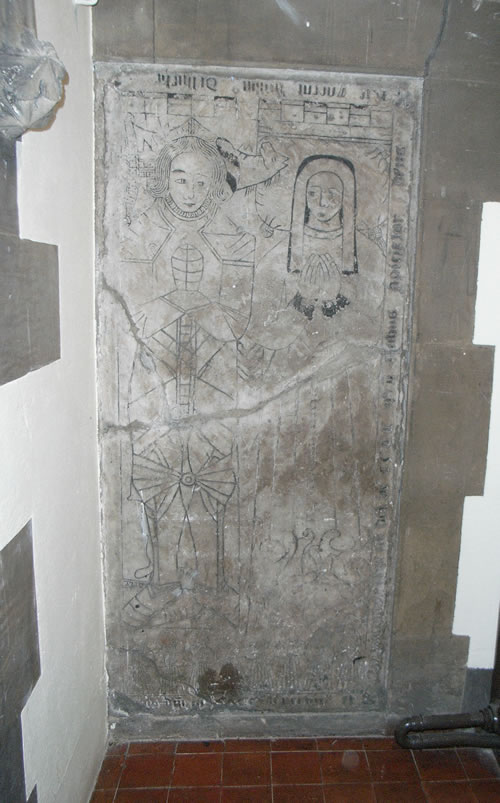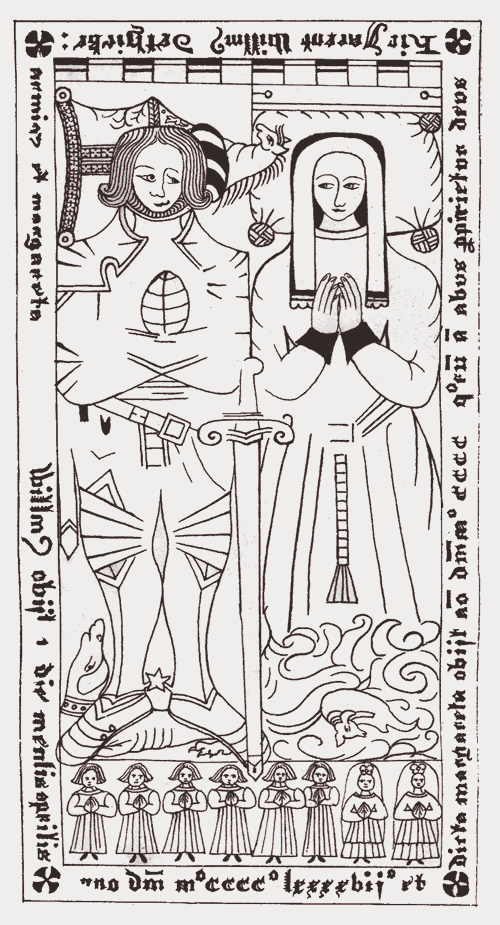Alabaster
Perhaps the most treasurered monument within the church is the engraved alabaster slab from the tomb recorded as that of Rev. William Dethick of Newhall and his wife, Margaret. This is though, slightly anomalous since priests could not marry before the Reformation and he died in 1497.
Newhall was one of numerous churches under the control of Saint Peter’s in Stapenhill. Despite having six sons and two daughters, as confirmed by the alabaster, he bequeathed an enormous £100 to Newhall parish and a further £100 to Hartshorne which was used to build a new church there.
Records show that the slab once stood in the chancel, next to the alter in the old church in an area usually reserved for Lords of the Manor. By 1822 it had been let into the floor and the altar rails partly covered it.
In 1876 it was moved to form part of the floor in the south porch of the old church, where it was often covered by the parish bier and the sexton’s implements, which accounts for much of the damage and making it very lucky to have survived in one piece.
It was thankfully, embedded upright into the wall near the main entrance, behind the bell-ringer, when the tower was added in 1884 where it now survives in relative safety.

The monument shows William Dethick in plate armour with his wife, Margaret, at his side. At their feet, as was common, are figures which represent his children showing that he had six sons and two daughters. William’s head rests on a tilting helmet with a nag’s head for a crest and at his feet is a ‘talbot’ guard dog.
William Dethick, who died in 1497, and his wife formed part of the long chain connecting the important Meynell and Dethick local families dating right back back to the 14th century.
The original design was thankfully preserved and the impression below can show how it would have looked over 600 years ago.

The monument was made from local material quarried at Fauld and worked in workshops at Burton where it would most likely have been delivered by river boat.
The alabaster trade flourished from the 14th – 17th centuries and two local names Royle and Arblaster are connected. Figures were incised into flat slabs and the incisions filled with intense black and bright red pigments. Almost all the local examples have been broken when moved leaving this one of the most intact examples.

